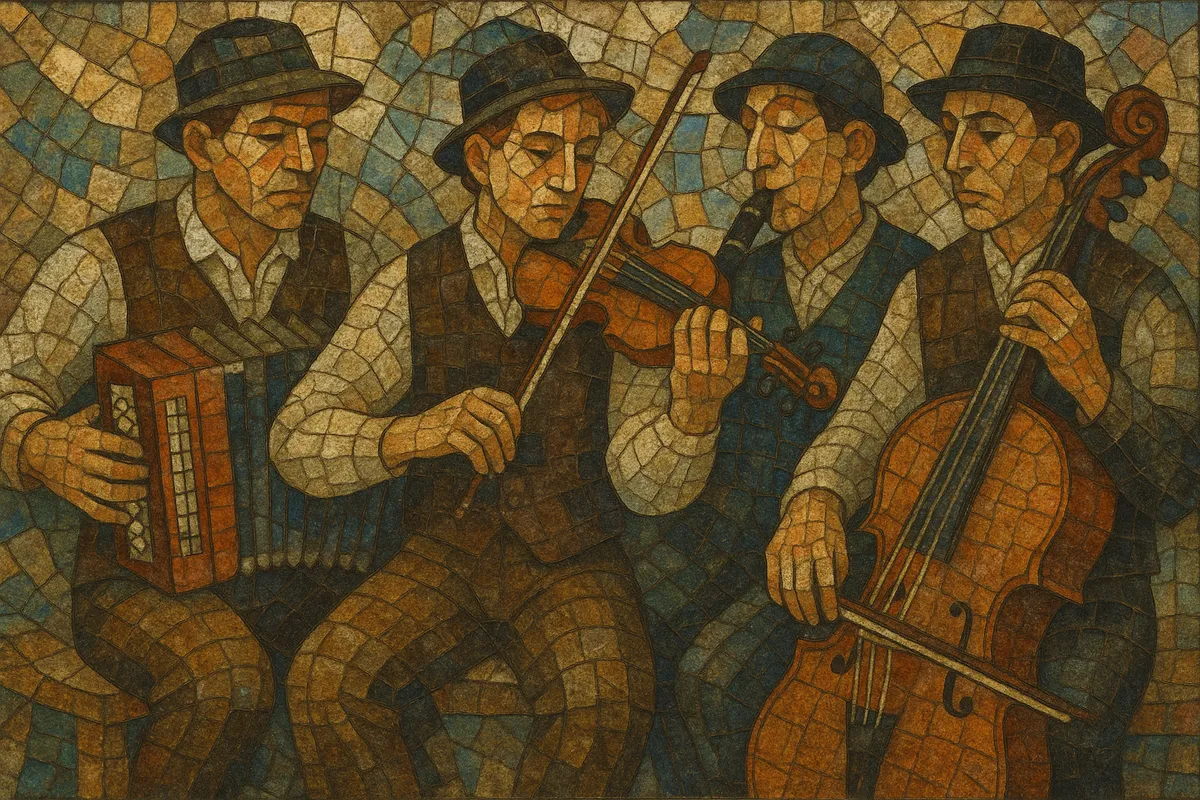
Ländlermusik is a traditional Alpine dance-music style most closely associated with Switzerland, where it crystallized into a distinct ensemble sound in the late 19th century. Rooted in the older Ländler dance, it typically features lilting triple meters (3/4) alongside polkas (2/4) and schottische (4/4), performed by small acoustic groups.
Characteristic instrumentation includes the Schwyzerörgeli (Swiss diatonic button accordion), clarinet, fiddle/violin, hammered dulcimer (Hackbrett), and double bass, with occasional yodel interludes. Harmonies are diatonic and tuneful (I–IV–V with occasional modal color), bass lines use steady “um-pa-pa” or “oom-pah” patterns, and melodies carry a gentle sway ideal for social dancing at taverns, weddings, and village festivals.
The Ländler dance emerged in the Alpine regions of Austria, Bavaria, and Switzerland in the late 18th and early 19th centuries. As village dance bands adopted the form, they blended local folk tunes with the new waltz craze, creating music with a strong triple-meter lilt and a rustic, communal feel.
In Switzerland, the style coalesced into “Ländlermusik” as new instruments and local ensemble practices took hold. The rise of the Schwyzerörgeli and related button accordions, plus clarinet, violin, Hackbrett, and bass, standardized the sound. Repertoires mixed Ländler (3/4), polka (2/4), and schottische (4/4), and the music accompanied social dancing at inns and open-air gatherings known as “Stubete.”
Radio broadcasts and 78 rpm/LP recordings helped codify iconic repertoire and performance styles. Influential bandleaders and composers such as Jost Ribary, Rees Gwerder, Peter Zinsli, and Alois “Heirassa” Schilliger wrote enduring tunes, while ensembles refined a supple, song-like phrasing that balanced danceability with lyrical charm.
Festivals and sessions (e.g., the Heirassa-Festival in Weggis and “Stubete am See” in Zürich) nurtured both preservation and innovation. Contemporary players keep traditional set lists alive while also experimenting—some groups integrate jazz harmony, pop forms, or light percussion, and younger acts sometimes fuse Ländlermusik aesthetics with modern popular styles, ensuring the genre’s continued relevance in Swiss cultural life.

